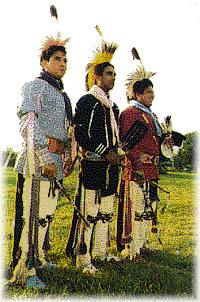
Lake Pawhuska provides trout fishing from Nov. 1 to Mar. 31. This 96 acre lake with clear water and rocky shorelines is located 3 miles west of Pawhuska on Highway 60 and 2 miles south on the county road. Boat ramps and a fishing dock are available with parking areas and restroom, all handicapped accessible. Camping at Lake Pawhuska is limited to primitive sites. Camp sites with electrical hook-ups are available at nearby Lake Blue Stem. There is no charge for lake access, and the City of Pawhuska has waived boating and fishing permits during trout season.
New excitement in trout fishing has been generated by stocking bigger fish, and rainbow trout between 14 & 24 inches, by the Oklahoma Wildlife Department. Lake Pawhuska quickly became a popular location for trout anglers during its first season of stocking in 1997.
LICENSE REQUIREMENTS
* A resident or nonresident fishing license is required of all persons who take or attempt to take fish, including trout, unless otherwise exempt.
* A trout license ($7.75) is required for all who fish in state designated trout areas or in tributaries to a state designated trout stream during trout season. THERE ARE NO EXCEPTIONS.
TROUT FISHING TIPS
Oklahoma has two introduced species of tout - rainbows and browns, with rainbows being far more abundant. Fingerling browns are stocked when available in the Mountain Fork River below Broken Bow dam and in the Lower Illinois River while rainbows are usually stocked every two weeks at all eight of the state's trout areas during designated trout seasons. Anglers can use the following tips to help them put trout on the stringer.
* Use an ultra-light rod and reel spooled with six pound or lighter line to produce more strikes.
* Small spinners, spoons, and crappie size jigs (tube or maribou) are good artificial lures.
* Fishing with live or prepared bait such as worms and salmon eggs is very productive where legal.
* Try small hooks (size 10 to 18) and sinkers to keep bait near the bottom and prevent trout from detecting any resistance.
* Fish during the early morning and late afternoons for best action.
* Concentrate on fishing around structure such as behind large rocks, logs and below riffles. Trout also tend to congregate above and below waterfalls, in an around deep pools and undercut banks.
* Rainbows tend to occupy faster moving water while browns may be found in more slack stretches.
* Trout face upstream to wait for insects to appear above them.
* Fly fisherman should try to fish with flies that resemble the insects and crustaceans that are most seasonally abundant.
* Fishing often improves a few days after stocking when trout have adjusted to their new environment.
